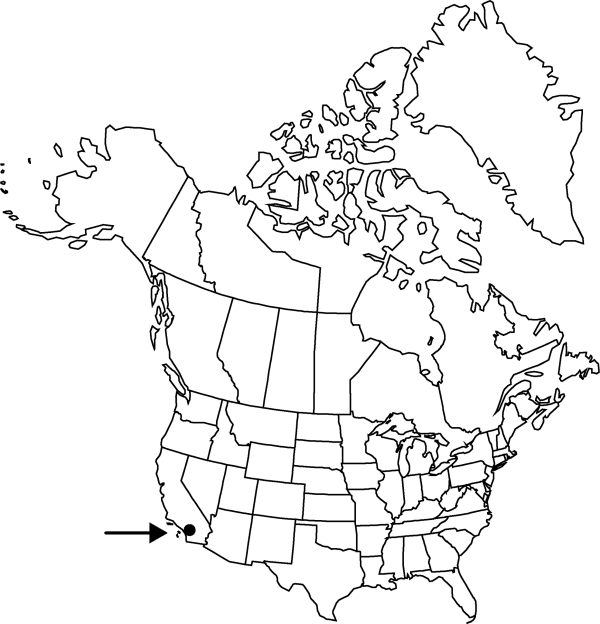Difference between revisions of "Opuntia basilaris var. brachyclada"
Man. S. Calif. Bot., 599. 1935.
Common names: Little beavertail pricklypear
Basionym: Opuntia brachyclada Griffiths
Treatment appears in FNA Volume 4. Mentioned on page 145.
FNA>Volume Importer |
FNA>Volume Importer |
||
| Line 20: | Line 20: | ||
}}<!-- | }}<!-- | ||
| − | --><span class="statement" id="st- | + | --><span class="statement" id="st-undefined" data-properties=""><b>Stem </b>segments decumbent, little flattened, oblong to narrowly spatulate, cylindric to clublike, 5–13 × 1.5–5 cm; areoles 4–6(–7) per diagonal row across midstem segment, circular. <b>Spines</b> absent. <b>Fruits</b> spineless. <b>2n</b> = 22.</span><!-- |
-->{{Treatment/Body | -->{{Treatment/Body | ||
| + | |phenology=Flowering spring (May). | ||
|habitat=Slopes of chaparral, oak-pine woodlands | |habitat=Slopes of chaparral, oak-pine woodlands | ||
|elevation=1200-1800 m | |elevation=1200-1800 m | ||
| Line 42: | Line 43: | ||
|basionyms=Opuntia brachyclada | |basionyms=Opuntia brachyclada | ||
|family=Cactaceae | |family=Cactaceae | ||
| + | |phenology=Flowering spring (May). | ||
|habitat=Slopes of chaparral, oak-pine woodlands | |habitat=Slopes of chaparral, oak-pine woodlands | ||
|elevation=1200-1800 m | |elevation=1200-1800 m | ||
| Line 49: | Line 51: | ||
|publication year=1935 | |publication year=1935 | ||
|special status= | |special status= | ||
| − | |source xml=https://jpend@bitbucket.org/aafc-mbb/fna- | + | |source xml=https://jpend@bitbucket.org/aafc-mbb/fna-data-curation.git/src/9216fc802291cd3df363fd52122300479582ede7/coarse_grained_fna_xml/V4/V4_278.xml |
|subfamily=Cactaceae subfam. Opuntioideae | |subfamily=Cactaceae subfam. Opuntioideae | ||
|genus=Opuntia | |genus=Opuntia | ||
|species=Opuntia basilaris | |species=Opuntia basilaris | ||
|variety=Opuntia basilaris var. brachyclada | |variety=Opuntia basilaris var. brachyclada | ||
| − | |||
| − | |||
| − | |||
| − | |||
| − | |||
| − | |||
| − | |||
| − | |||
| − | |||
| − | |||
}}<!-- | }}<!-- | ||
-->[[Category:Treatment]][[Category:Opuntia basilaris]] | -->[[Category:Treatment]][[Category:Opuntia basilaris]] | ||
Revision as of 14:03, 27 July 2019
Stem segments decumbent, little flattened, oblong to narrowly spatulate, cylindric to clublike, 5–13 × 1.5–5 cm; areoles 4–6(–7) per diagonal row across midstem segment, circular. Spines absent. Fruits spineless. 2n = 22.
Phenology: Flowering spring (May).
Habitat: Slopes of chaparral, oak-pine woodlands
Elevation: 1200-1800 m
Discussion
Of conservation concern.
Selected References
None.
Lower Taxa
None.
